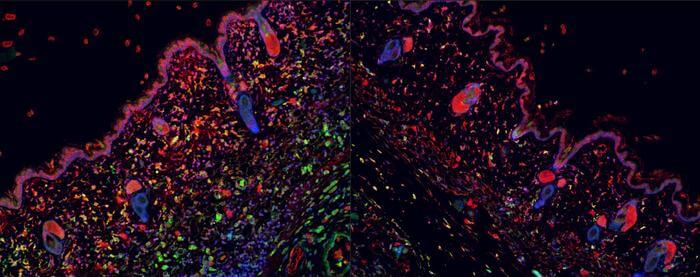WASHINGTON — Could a marijuana-like drug that causes a blissful calm provide new hope for people suffering from skin lupus? Scientists from George Washington University say they have uncovered a compound that could serve as a new treatment for those dealing with this severe autoimmune skin disease.
This study, based on experiments with mice, has raised the possibility that anandamide, the compound in question, could one day help alleviate the painful and disfiguring skin lesions associated with cutaneous lupus erythematosus.
Anandamide is classified as an endocannabinoid, and it acts on receptors in a manner similar to THC and CBD, which are the well-known active components of marijuana. Anandamide is one of the body’s naturally produced cannabinoids, and it is believed to play a role in regulating various bodily systems, including the immune system.
For the study, George Washington University researchers wanted to see if they could harness the power of anandamide to treat or even prevent skin lupus. The disease occurs when the immune system mistakenly attacks healthy skin, resulting in rashes and painful sores. Prior research has suggested that systemic lupus, a condition where the immune system targets its own tissues and organs, might be influenced by dysregulation of the human endocannabinoid system.

To deliver anandamide effectively through the skin, researchers utilized nanoparticles that could gradually release the experimental treatment. Collaborating with other scientists, they tested this delivery system on genetically modified mice prone to developing the skin disease.
In the initial phase of the study, researchers administered anandamide enclosed in nanoparticles to mice that had not yet displayed symptoms.
“We found that we could prevent skin lesions from developing at the expected time point,” says Adam Friedman, professor and chair of the Department of Dermatology at the GW School of Medicine & Health Sciences, in a university release.
Subsequently, researchers investigated the treatment’s potential to alleviate symptoms in mice already experiencing the disease. They compared the effects of anandamide encapsulated in nanoparticles with those of anandamide alone, given to a control group of mice. After 10 weeks, researchers observed that the nanoparticle-based treatment significantly reduced the size and severity of skin sores in the mice, surpassing the effects of anandamide alone.
“If future studies verify these results, the treatment could prove to be a promising therapy for people coping with skin lupus,” notes Friedman.
Currently, doctors primarily rely on steroids and other medications to manage the disease, which do not target the underlying pathology.
“There is an unmet need for a more effective treatment,” concludes Friedman.
The study is published in the journal Experimental Dermatology.
You might also be interested in:
- Ginger supplements pack anti-inflammatory punch that may knock out autoimmune diseases
- What is psoriasis? Everything you need to know about the chronic skin condition
- CBD carries powerful anti-inflammatory benefits, study shows

